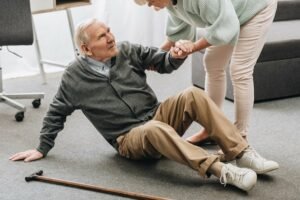Many of the summertime activities we love to do include water, and water can be problematic for high-tech, electronic hearing aids. Splashes of water, oil, salt, sweat and sand can corrode contact points, clog tubes or destroy microphones and receivers. So, how do you enjoy summer activities while protecting your investment and keeping your hearing aids dry? We offer some advice here.
Protecting Your Hearing Aids
Modern technology has improved the durability and the ability to withstand moisture of many hearing aids. Today, there are fully waterproof hearing aids — but they are rare. More common are water-resistant hearing aids. It is important to understand the capabilities of your personal hearing device to ensure you don’t permanently damage it.
The summer activities you want to do will determine if your hearing aid is up to the task or if it needs to be sidelined. With kayaking, hiking and water gun fights there is light moisture contact, so water-resistant hearing aids are adequate. For swimming, tubing down the river and other activities where you are likely to be fully submerged, you will either need a waterproof hearing aid or you’ll need to remove it before engaging in the activity.
Water-Resistant Ear Gear
• Water-resistant materials. A recent technological development called Nanoblock offers a highly-durable protective coating that completely seals every part of the instrument, protecting it from moisture and dirt. This coating protects against earwax, oil from the skin, moisture and sweat, adding a level of water-resistance to hearing aids that are made with it. These devices are protected against water splashes and sweat. However, water-resistant does not mean waterproof and submersion in water from swimming or showering could damage these hearing aids.
• Protective covers are an inexpensive way to add water-resistance to a non-waterproof hearing aid. They fit most hearing aid models and are made of water resistant spandex nylon. The sleeve protects the hearing aid amplifier, case, controls and battery compartment from moisture and other environmental elements, while still allowing sound to enter the microphone. Although these sleeves won’t protect your hearing aid if it’s completely immersed in water, they will help minimize the damage from excessive perspiration or a stray splash. Ear Gear and Hearing Aid Sweat Bands offer this protection in a variety of sizes and colors.
Waterproof Hearing Aids
If you want to swim, dive or otherwise submerge yourself in water while using your hearing aid, you need a completely waterproof hearing aid to avoid doing damage. While more rare, waterproof hearing aids are available.
Consider a hearing aid dryer or dehumidifier
Even the most careful among us can have an accident where our hearing aid gets wet. When this happens, simply remove them from the water source, pat dry, remove the batteries and dry the battery compartment, then put them in the hearing aid dryer overnight. Hearing aid dryers are available for as little as $10 and can often prevent permanent damage.
Whether you’re looking for a hearing aid that can handle water-based fun or just need a professional hearing evaluation, visit Dr. Heather Dean at Sierra Nevada Hearing Aid Center for quality care and advice. Call 775.882.3277 for an appointment.
Sources
http://www.healthyhearing.com/report/52633-Are-your-hearing-aids-ready-for-fun-in-the-sun
http://www.healthyhearing.com/report/50405-Protecting-your-hearing-aids-in-the-water
https://www.earq.com/blog/water-resistant-vs-waterproof-explained




